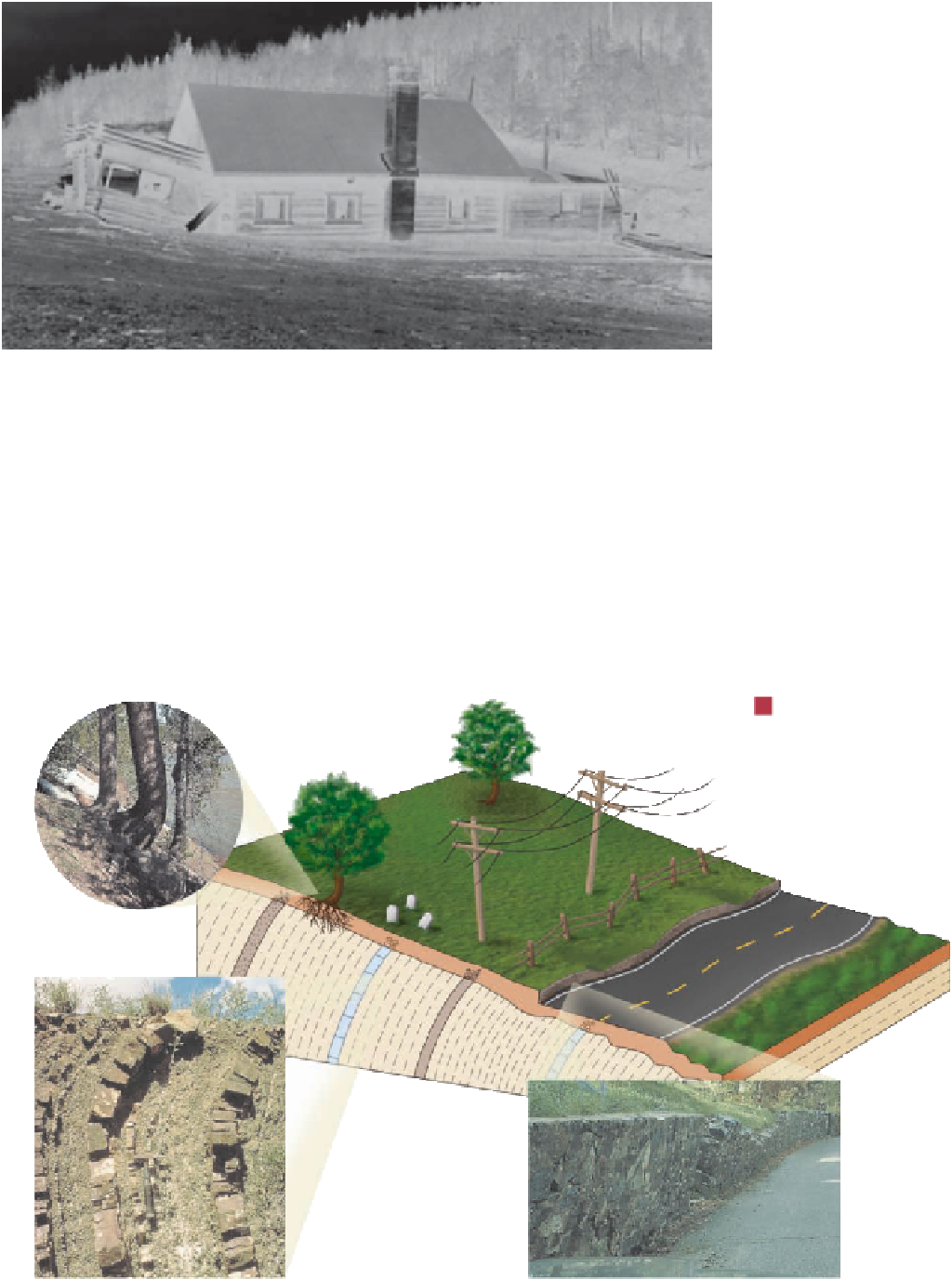Geology Reference
In-Depth Information
◗
Figure 11.20
Permafrost
Damage The house, south of
Fairbanks, Alaska, has settled
unevenly because the underlying
permafrost in fi ne-grained silts
and sands has thawed.
slope, and the benches serve as collecting sites for small land-
slides or rockfalls that might occur. Benching is most com-
monly used on steep hillsides in conjunction with a system
of surface drains to divert runoff.
In some situations, retaining walls are constructed to
provide support for the base of the slope (
with crushed rock, and provided with drain holes to prevent
the buildup of water pressure in the hillside.
Rock bolts
, similar to those employed in tunneling
and mining, are sometimes be used to fasten potentially
unstable rock masses into the underlying stable bedrock
(
Figure 11.28).
The walls are usually anchored well into bedrock, backfi lled
◗
Figure 11.29). This technique has been used success-
fully on the hillsides of Rio de aneiro, Brazil, and to
◗
◗
Figure 11.21
Creep
Some evidence of creep:
(A) curved tree trunks; (B)
displaced monuments; (C) tilted
power poles; (D) displaced and
tilted fences; (E) roadways moved
out of alignment; (F) hummocky
surface.
a
C
D
E
A
B
F
Trees, bent by
creep, Wyoming.
b
Stone wall tilted due to creep in Champion,
Michigan.
d
Creep has bent these sandstone
and shale beds of the Haymond
Formation near Marathon, Texas.
c




Search WWH ::

Custom Search